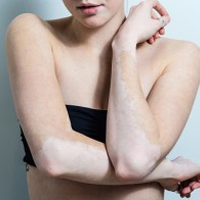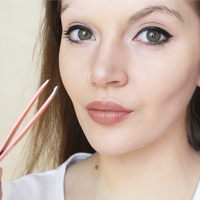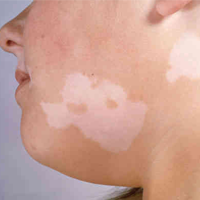What You Need to Know About Vitiligo

Vitiligo is the name given to a condition that causes the loss of pigment on the skin, hair and in some cases eye colour. The lack of pigmentation causes white patches to appear and these can be of various shapes and sizes. Both male and females can develop this condition and of any race, although it is thought that one is more likely to develop Vitiligo if a parent or relative has the condition. Vitiligo is also more likely amongst those who suffer from an autoimmune condition such as hyperthyroidism.
This condition defined by lack of pigmentation, is said to affect around 2% of the world’s population and symptoms generally show themselves in people between the ages of 10 to 30. Symptoms of Vitiligo come about as a result of the cells called melanocytes failing to function or being destroyed. Melanocytes are the cells that produce colour in the skin. The condition can be brought on by stress but it is generally thought that Vitiligo is a condition brought on by an autoimmune reaction in the body.
Vitiligo is not a contagious condition despite what people might believe but it can be genetically inherited. The most common and obvious symptom of Vitiligo is the white patches found on the skin which can be found on any part of the body. Patches can be of all different sizes and are know t grow bigger over time. The loss of pigment or colour can also be seen in the hair and in the eyes.
The most common treatment for Vitiligo is that of UV light therapy re-pigmentation, skin grafting or even skin tattooing. The use of steroids can also be used to treat Vitiligo but has no guarantee of being successful. Newer treatments include the use of herbal remedies and special diets which have proven to be very positive and have an almost natural effect in curing the condition.



